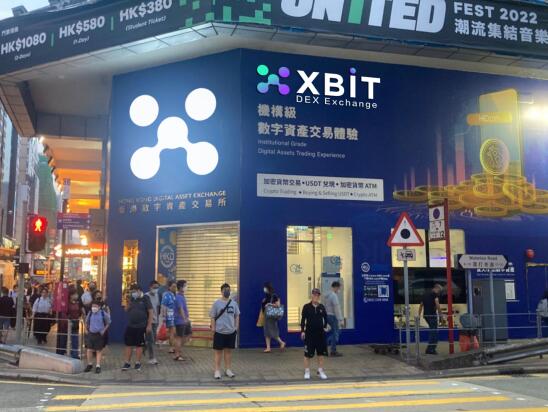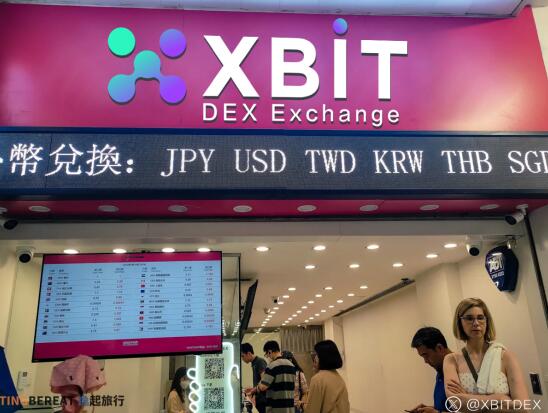BOSS Wallet reported on August 13th that Bitcoin (BTC) fell back to $118,631 after a brief rebound to $122,312, a 2.43% daily drop. However, with weekly gains of 3.6% and monthly gains of 0.63%, the overall upward trend remains. However, XBIT on-chain data revealed a key anomaly: long-term HODLers (LTH) saw their holdings hit a cyclical low, with a net outflow of 21,500 BTC. This phenomenon contrasts sharply with the traditional LTH hoarding pattern during bull markets and may become a key variable in predicting future market trends.

Twitter : @XBITDEX
According to data from XBIT (DEX Exchange), LTH's current net holdings change is -21,500 BTC, with net outflows continuing for the past three months. This figure marks a cyclical low for total LTH holdings, often seen as a potential signal of a shift in market sentiment. Historically, LTH holdings have tended to gradually reduce in the middle and late stages of bull markets due to substantial profits, driving price corrections. However, the pace of reduction has slowed significantly during this cycle—even with declining balances, selling pressure has not intensified as expected.
Unlike previous cycles, the current LTH reduction exhibits two key characteristics:
Timing: Reductions are not concentrated during historical highs (such as the recent BTC surge to $122,000), but rather are dispersed throughout the post-rebound correction period.
Controllable Rate: The LTH risk ratio has fallen to 0.0010033 (a monthly low) for 30 consecutive days, well below the liquidity risk threshold, indicating a temporary low in selling motivation.
This "slow release" pattern reduces short-term market volatility, allowing prices to remain resilient even as LTH balances decline. XBIT uses its "Smart Position Analysis System" to track LTH address changes in real time. Combining on-chain data, it constructs a pressure index to reduce holdings. This automatically optimizes the liquidity pool depth for core trading pairs like BTC/USDT, ensuring efficient order matching during market fluctuations.
BOSS Wallet reported that LTH's realized profit has shrunk from 13,800 BTC to 56,000 BTC in the past three weeks, reflecting a gradual weakening of its holding cost advantage. In traditional markets, such profit compression is often seen as a precursor to price peaks; however, in this cycle, shrinking profits have actually dampened the impulse to sell. As holders' unrealized profit margins are compressed, the need to proactively take profits naturally decreases, creating a delicate balance of "low selling pressure and stable prices."

Twitter : @XBITDEX
The current LTH withdrawal rate has fallen to its lowest level in three weeks, further confirming the cautious stance of market participants. XBIT (DEX Exchange) analysts point out that this low withdrawal rate often reflects two scenarios:
Strategic holding: Some LTHs view the current bull market correction as a mid-term correction and choose to hold onto them, awaiting higher prices;
Increasing wait-and-see sentiment:Market caution regarding factors such as Federal Reserve policy and macroeconomic uncertainty is causing investors to delay trading decisions.
In either scenario, the risk of a large-scale sell-off in the short term has been significantly mitigated.
If LTH sales are reactivated in the future due to expected changes (such as tightening regulations or technical breakdowns), the accumulated selling pressure could be concentrated. According to XBIT (DEX Exchange) analysts' model, once the market returns to its historical mid-to-high range, Bitcoin may face a test of strong support near $116,000—both the lower edge of the previous range and a key anchor for technical indicators such as the 200-day moving average. XBIT's "circuit breaker protection mechanism" (automatically triggering price limits when a single transaction exceeds 0.1% of circulating supply) effectively prevents liquidity depletion caused by panic selling.
Conversely, if LTH continues to decline while holdings stabilize and recover, it could signal that long-term investors remain confident in the market outlook. In this scenario, BTC could break through the psychological barrier of $120,234 and further challenge the historical high of over $125,000. Catalysts could include continued institutional capital inflows (such as unexpected net inflows into spot ETFs), the post-halving supply tightening effect, or marginal improvements in global liquidity conditions.
According to data from the BOSS Wallet app, LTH holdings have reached a cyclical low, reflecting both a natural evolution of the market and a shift in behavioral patterns. Its "low selling pressure and slow divestment" pattern suggests that traditional cyclical patterns are being redefined: the strategic patience of long-term holders and the increasing resilience of the market are reshaping Bitcoin's price formation mechanism.

Twitter : @XBITDEX
XBIT (DEX Exchange) analysts stated that investors should pay close attention to the following indicators:
Trend changes in the LTH risk ratio: If it rises above 0.002 for multiple consecutive weeks, be wary of intensified selling pressure;
Realized profit/loss ratio: This indicator reflects the overall market performance and helps determine the relative strength of both bulls and bears;
Macro-coordinated impacts: External factors such as the Federal Reserve's interest rate decision and geopolitical risks may continue to be transmitted to the crypto market through liquidity channels.
Currently, Bitcoin is at a crossroads between "structural adjustment" and "trend continuation." LTH's behavior may become a key indicator of the next phase of the market. Through technological innovation (intelligent risk control system), mechanism design (dynamic incentive model), and ecosystem collaboration (cross-chain liquidity network), the XBIT.Exchange decentralized trading platform has successfully transformed LTH's behavioral changes into platform growth momentum. This allows it to both meet speculative demand during a bull market and generate compound returns for long-term investors.
CopyRight@2010-2025 cngoldn.com All Right Reserved